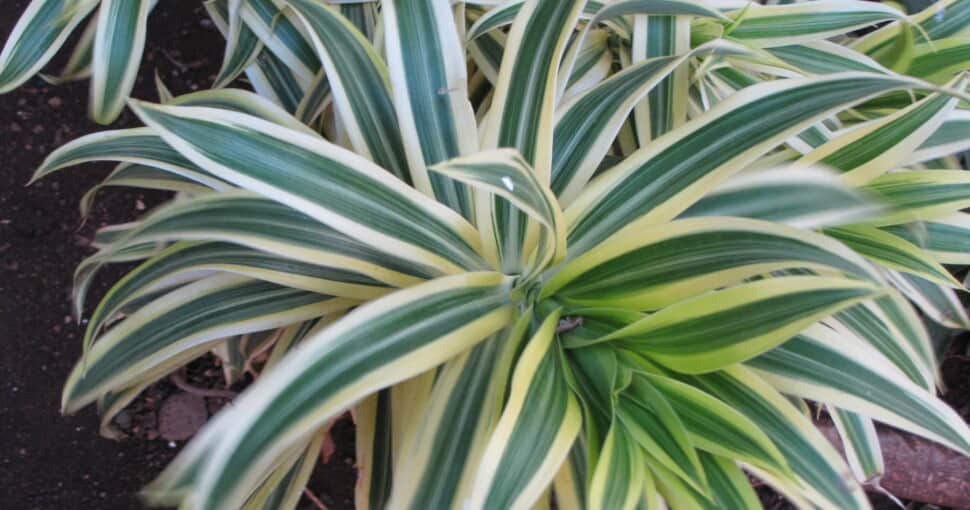Dracaenas are gorgeous indoor and outdoor plants. With several varieties that have vastly different looks, there is no wonder plant enthusiasts struggle to tell them apart from other plants. It’s easy to be misled into thinking that other plants belong to the Dracaena species as well since they make up a large portion of popular plants to have.
Contents
Dracaena plants can be variegated or have plain green leaves. Some varieties also have bordered leaves with different hues. But most Dracaenas don’t have colors that bleed into the middle of their leaf. Instead, they are kept to the outside of the leaf or are in contrasting patterns over their surface.
Some Dracaenas have multiple shoots that reach deep into their soil, while others have a single stem. Single-stemmed Dracaenas make for more popular indoor plants, while their multi-rooted cousins are typically grown outdoors. With so many types of Dracaena, you may even get confused between each one.
To keep things simple, we’ve broken down the difference between different species of Dracaena and the plants they are most commonly mistaken for (or vice versa). Our list should help you identify which plants you’re cultivating, so you can care for them accordingly.
The aesthetic of Dracaenas can vary wildly depending on the type of plant you get. Because of its varying colors and looks, it can often resemble the look of other plants. This leads to misidentification of the Dracaena or its look-alike, which can be frustrating for plant owners or enthusiasts.
As different plants have unique care requirements, it’s essential to be able to identify the plant they are dealing with. Luckily, there are some simple tricks to correctly identify these plants and tell them apart from one another.
1. Yucca
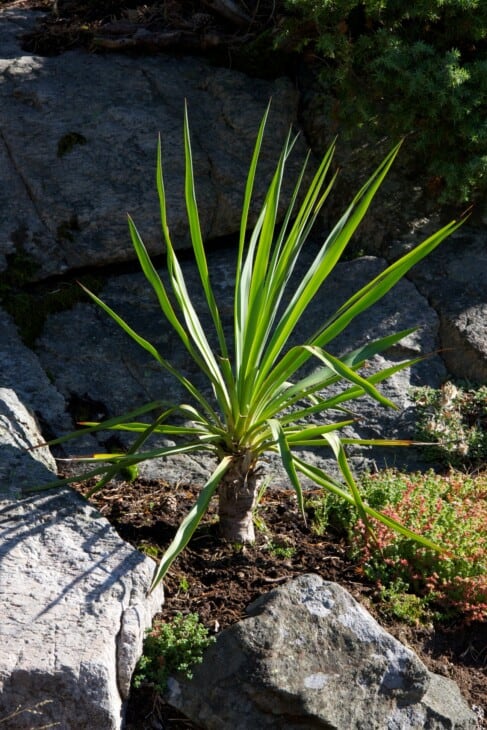
The Yucca is a type of shrub that bares a striking resemblance to Dracaena Marginata (or the Dragon Tree). Both of these plants look like small trees and can be planted in or outdoors, and they have long, slender leaves. Their leaves also end in sharp points, making them almost indistinguishable at first glance.
However, Yucca plants have light green leaves with a brown tint, while Dracaena Marginata has dark green leaves. Dracaenas can also have a light-yellow hue or stripes on the leaves with a reddish border and look fresh and healthy. Yucca plants can look more like they are dried out when their brown shade is apparent enough.
The other difference between Yucca plants and Dracaena Marginata is the feel of their leaves. Yucca plants have thin and flimsy, drooping leaves with no structural integrity. On the other hand, Dracaena Marginata has thicker, rigid leaves that can sometimes stand upright or stick out from the plant’s stem.
Related: 7 Plants That Look Like Yucca | Are Yucca Plants Poisonous?
2. Zea Mays
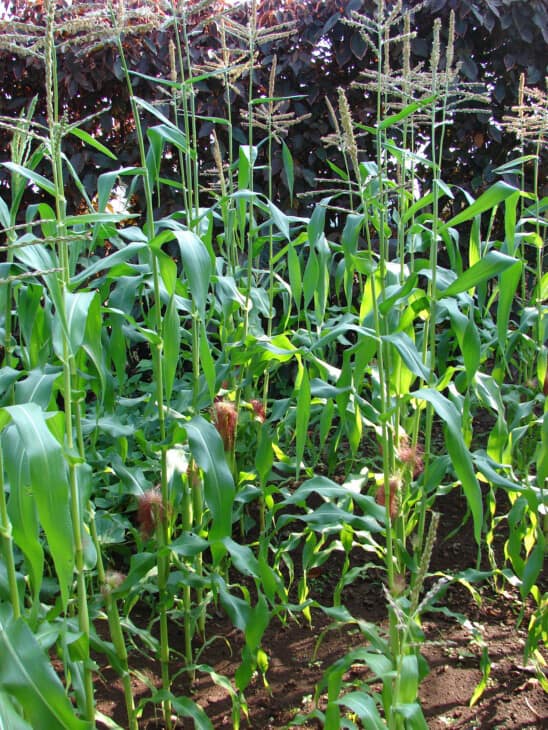
Zea Mays, also known as the common maize or corn plant, is a unique-looking plant that produces ears of corn. And while this plant is used for food production, it is still often confused with the indoor Dracaena Fragrans plant. This Dracaena is aptly named the Corn Plant because of its comparable physical characteristics with Zea Mays.
Of course, many people mistake the two plants for one based solely on their names’ similarities. After all, if you name a plant ‘the Corn Plant,’ it’s bound to cause a little confusion. But the Dracaena Fragrans was given its name because of its long, broad leaves that look exactly like those of a maize plant.
It’s usually easy to tell these two plants apart because of how they are grown. Maize plants are generally not found in people’s homes or domestic gardens, just as Dracaena Fragrans isn’t found in fields of corn. The Dracaena also doesn’t produce any corn. Instead, it produces white, fluffy blooms.
3. Zebra Plant
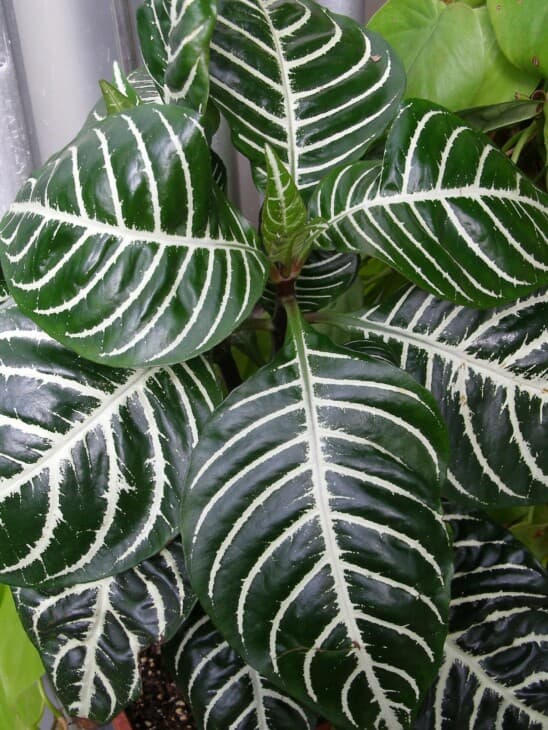
The Aphelandra squarrosa, also referred to as the Zebra plant, gets its name from its unusual markings. These markings can often present as lighter stripes against the dark-green leaves, like how a zebra’s stripes contrast against its white body. And these plants are closely mimicked by the lines found on the Dracaena Goldieana, or the Zebra-Striped Dragon Tree.
With such similar names and appearances, it’s tricky to tell the two plants apart. These two plants also belong to the same plant family. Namely, the Acanthaceae family. This may explain why these two plants look so much alike.
The Zebra plant has thin, white, or light-yellow veins that run across the large, broad leaves. In contrast, the Dracaena Goldieana has dark-green stripes patterned across its light-green leaves. The Dracaena also usually has pointed leaf tips, while the Zebra plant has rounded ends. This shape gives the Zebra plant a more rounded appearance than the Goldieana.
Related: 10 Plants That Look Like Zebra Plants
4. Moses In The Cradle Plants
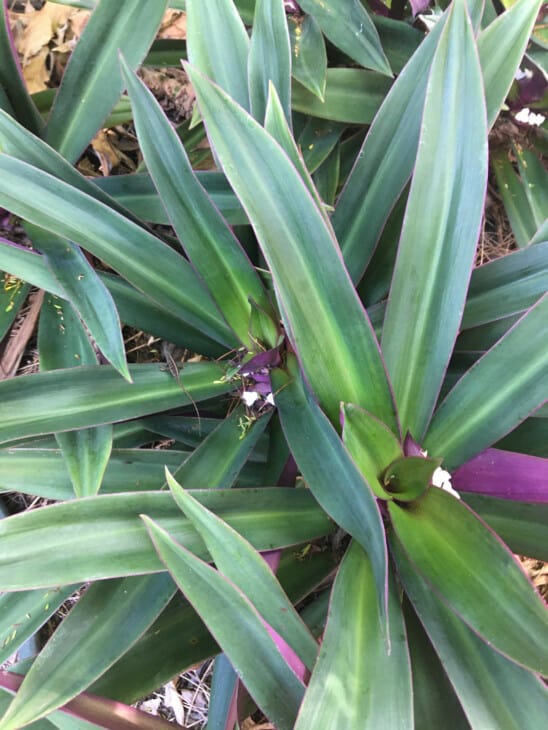
The Tradescantia Spathacea or Moses-in-the-cradle plant is a houseplant that looks exceptionally similar to Dracaena Trifasciata, more commonly known as Mother-in-law’s tongue. The Moses plant is kept indoors and outdoors, just like the Dracaena. But the indoor variety is much smaller and is easily mistaken for a different variation of an indoor variety of Mother-in-law’s tongue.
In reality, the Moses plant comes from the Commelinaceae family. Adversely, the Dracaena is part of the Acanthaceae family. The Dracaena also has more upright leaves with green and yellow coloring. The Moses plant may have the same patterns and leaf shape. However, they usually have a slight pink or purple hue around the leaves edges. They can sometimes also curl or bend downward.
When these plants are kept outdoors, they bare almost no resemblance. So it’s easier to tell the two of them apart. If you’re ever in doubt, check the coloring of the leaves. The color should help you correctly identify which plant you’re cultivating.
5. Bird’s Nest Fern
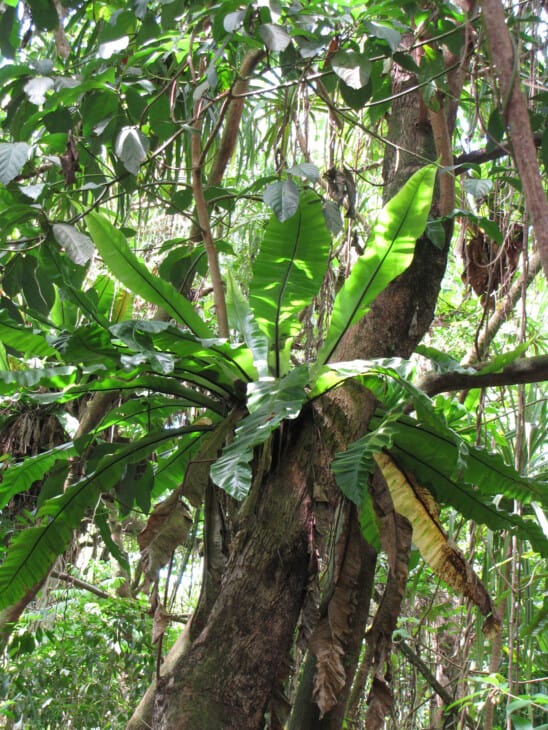
The Bird’s Nest Fern (Asplenium Nidus) is a popular indoor plant. Its bright-green, wavy leaves are tall and look beautiful in any home. But when you compare it side-by-side with Dracaena Fragrans ‘Limelight’ or the Limelight Dracaena, the two plants look like they come from similar plant families.
The difference between these two plants is more apparent if you study the shape and coloring of their leaves, as well as their size. The Dracaena has lighter leaves that aren’t as waved around the edges. It is also slightly bigger, with deep lines running across the surface of the leaves. The Bird’s Nest Fern is much smoother and darker.
The bottom of the Bird’s Nest is also raised, with the leaves starting higher up the stem than the Dracaena. The Dracaena’s bottom leaves start much lower and often droop down from the weight of the leaves above it. Lastly, the Dracaena also produces more foliage than the Bird’s Nest.
6. Century Plants
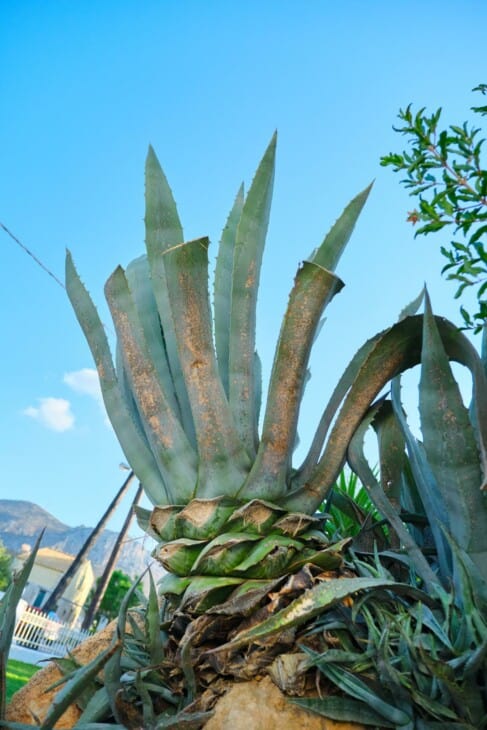
The last plant on our list is Agave Americana. This plant is more commonly known as a Century Plant and is a large indoor or outdoor plant with large, upright, spiked leaves. Of course, it’s not hard to see why Dracaena Reflexa or Song of India and this plant are confused.
Related: 6 Plants That Look Like Agave
The Dracaena also has long, upright leaves, although they typically have yellow and green variegation. They also lack the spiked edges that the Agave plant has, which makes it easier to identify which plant is which.
The Agave also has one solid trunk at the bottom of its stem. On the other hand, the Dracaena has multiple, thinner shoots that lead into the stems. Each branch also has a bushel of leaves, unlike the Agave, which stretches into one long leaf at the end of each branch.

